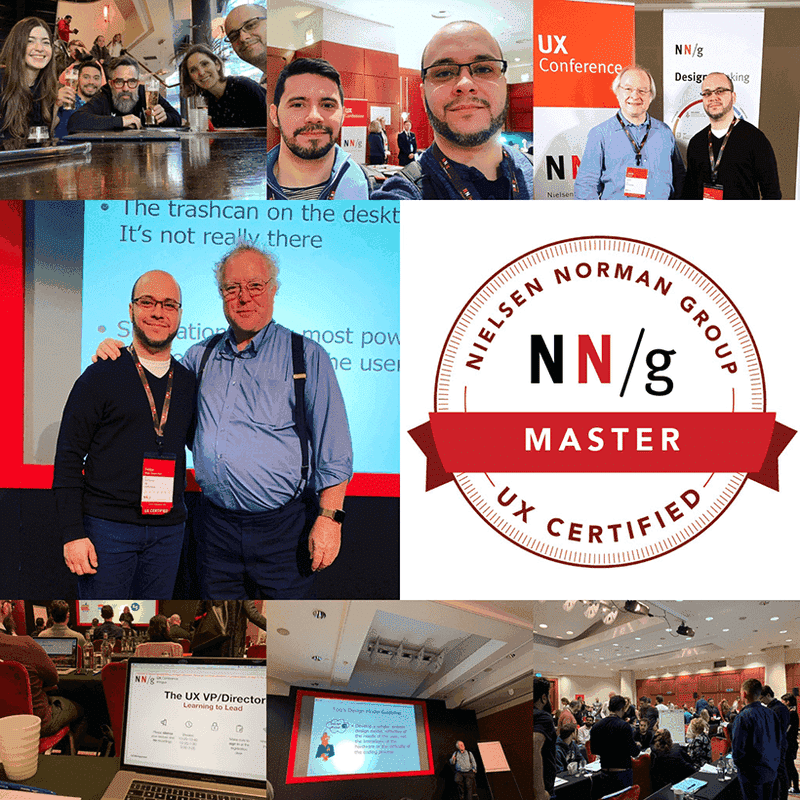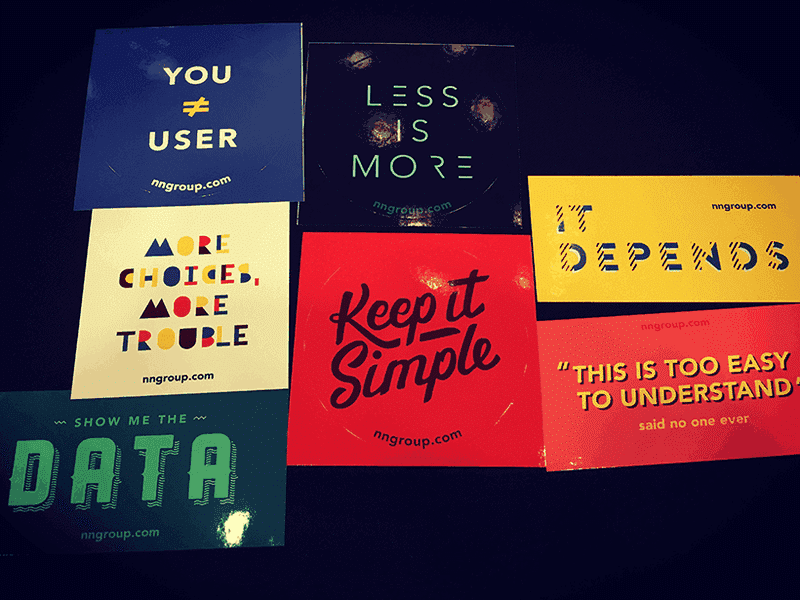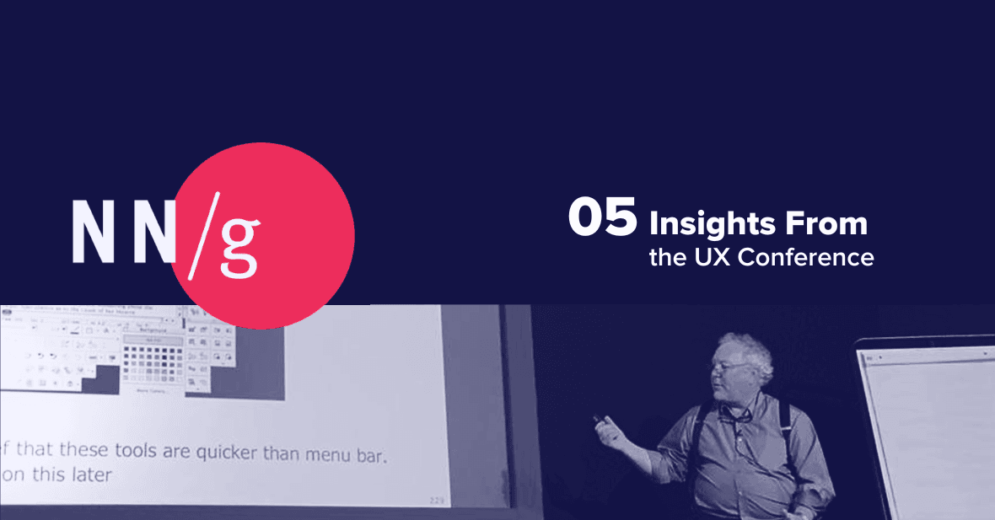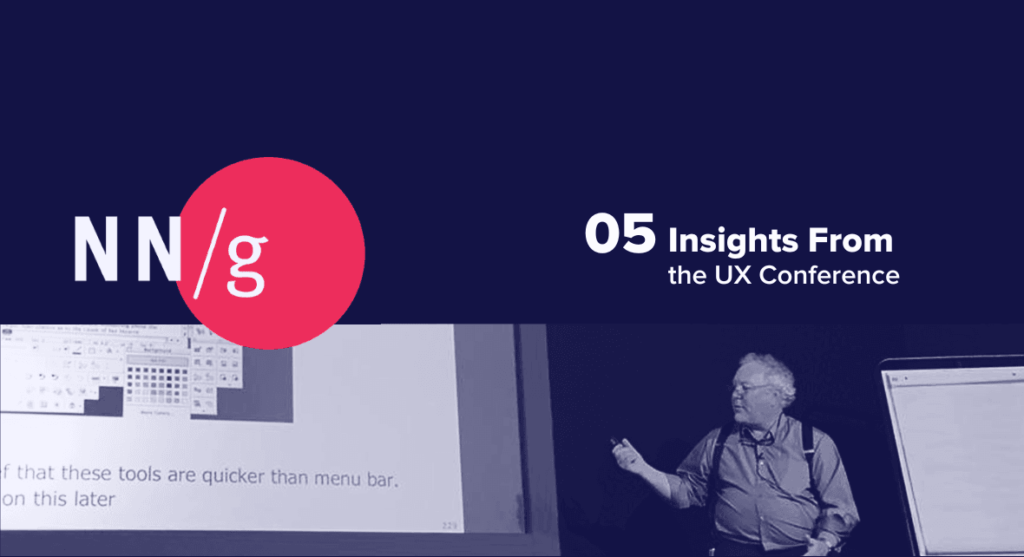The Nielsen Norman Group (NN/g) organizes the UX Conference several times a year. Each conference takes place in a different city around the world and lasts for 7 days, offering a variety of workshops each day.
Due to its popularity and size, the UX Conference is a major reference for research knowledge, methods, processes, and UX/UI design management.
As for myself, Felipe Guimarães, I am already a Certified UX Master (UXMC) and an Interaction Design Master from NN/g.
I had the opportunity to participate in this intensive week of learning at the UX Conference held in London.
Next, I will share my top 5 takeaways from the UX Conference and provide a brief overview of the NN/g!
The founders of UX Design
The Nielsen Norman Group is a leading company in the field of User Experience Design. From writing articles to organizing events and providing consulting services, NN/g specializes in creating content on UX/UI Design and spreading knowledge on the subject worldwide.
Founded over 20 years ago by Jakob Nielsen and Don Norman, both considered pioneers in the field of user experience, NN/g has become a renowned authority in the industry.
Their expertise and contributions have greatly influenced the development and understanding of UX Design.

Currently, NN/g is responsible for organizing the UX Conference, bringing together various professionals in the field for a week-long event filled with courses and lectures that enhance their knowledge.
Additionally, if you successfully complete five courses and pass the corresponding tests with a score above 80%, you are eligible for a UX certification. This certification serves as a valuable recognition of your expertise in the field of User Experience.
The 5 insights from the UX Conference
I focused more on attending workshops emphasizing UX processes and management. As a result, the content was less technical and more focused on soft skills.
1) Raising awareness of UX among stakeholders
Many individuals complain that UX and UI departments are not valued in their workplaces, and other strategic areas and positions fail to recognize the importance of user research, usability testing, and other processes involved in Product Design.
Therefore, one of the key responsibilities of professionals in the field, whether they are UX, UI, Researchers, or Product Designers, is to raise design awareness among stakeholders.
Instead of simply lamenting the lack of understanding and appreciation, each Product Designer has a role in educating those who may not yet comprehend their significance.
This appreciation is achieved gradually by showcasing each process, research endeavor, and decision in a gradual manner.
Reading tip: UX Design and Product Design: Find Out the Difference

2) Analytics and research are indispensable
It is common for Product Designers to rely on their intuition and the experience they have gained over many years of work. While experience is indeed valuable, disregarding data analysis and research is a risky proposition.
Each project is unique, with different goals and users. Therefore, a detailed analysis of each situation greatly aids in decision-making. For instance, data analysis allows for the integration of technical insights with intuitive understanding. As a result, the project outcomes become more grounded and reliable.
Remember: an experienced Product Designer understands that data analysis and user research bring forth crucial discussions and insights for every project. Disregarding data means making arbitrary decisions, which can eventually harm the project's success.
Reading tip: Benchmarking: How To Conduct One?
3) Communicating project details and workshops
In the field of UX Design, it is common to use Design Thinking methodologies and conduct workshops in groups.
The overall objective of these processes is to foster discussions, generate insights, and aid decision-making at various stages of the project.
However, it is equally important to leverage these forums to disseminate knowledge. Every project brings valuable learnings, and sharing them with colleagues and stakeholders is essential.
In addition to sharing results and acquired knowledge, presenting project details to others is crucial for gaining insights. Sometimes, unforeseen challenges may arise simply because they are not part of the day-to-day business operations.
I want you to know that maintaining communication with all affected areas is crucial to address any gaps or situations that may hinder project development.
Therefore, a well-rounded Product Designer is more than just someone immersed in processes and developments without interacting with the rest of the team.
A skilled professional must also possess effective communication skills and recognize the importance of communication for achieving efficient outcomes.

4) Handling criticism and feedback
Receiving emails with various criticisms, negative feedback, and change requests is quite common for a Product Designer, especially when the project development is already 90% complete.
In such situations, it is important to consider two scenarios:
- Constructive criticism that makes sense, likely indicating a communication failure in the project and overlooking various gaps and important situations.
- Non-constructive criticism and feedback that does not align with the project's briefing and objectives.
In Scenario 1, the best approach is to take a step back, establish effective communication, and address the problems highlighted.
In Scenario 2, it is very important to have a framework for responding as politely as possible. The framework proposed by NN/g is a model where the response is based on each criticism and remark provided by the critic. The responses should always highlight the project's objectives and explain the rationale behind each step and decision made.
For example, if the feedback comes in the form of an email, gather all the points from the email and respond with arguments based on data acquired through research and testing. Present results, research findings, numbers, and other pertinent information that help explain and clarify the concerns.
Important note: Politeness in the response is as essential as the presented data. If doubts persist despite using the response framework, you can propose a comparative test between the solution in development and the solution incorporating the suggested changes and criticisms.
Criticism and feedback will always exist, and it is the responsibility of the Product Designer to professionally address these matters.
5) Understanding the reasons for a Redesign
The situation is not uncommon: a client requests a redesign of their product, claiming it is outdated, old-fashioned, or out of style. The knee-jerk reaction is often to initiate research, testing, and development.
In the end, the solution created to fulfill this request ends up being very similar to the previous version criticized by the client.
So, before diving into the project, it is important to meet with the client and understand why they asked for a redesign. Try to cover these topics:
- Is it due to a loss in conversion rates?
- Has the website traffic decreased?
- Is the competition stealing customers?
- Or is it simply because they believe the design has become outdated?
Having this conversation with the client can save precious time. Additionally, it is important to test the old design to gain a better understanding and validate the reasons for the proposed changes as described by the client.
Just like in any profession, time is of great importance. The Product Designer needs to interpret and understand each client's request in order to utilize their time in the most effective manner possible.
A redesign may or may not make sense from a functional standpoint, and it is crucial to assess the reasons behind it.

Reading tip: Redesign: Are You Sure About It?
Final Thoughts
Attending the UX Conference is a valuable experience for learning and gaining knowledge about Product Design.
However, if you are unable to participate due to a lack of necessary experience or financial constraints, don't be discouraged. The key is never to stop learning.
There is a wealth of high-quality and easily accessible information available. We regularly publish articles and videos on our YouTube channel.
In short, there is a vast amount of material to help you become a better professional every day. Stay committed and dedicated, and remember that we are here to assist you with whatever you need.
And if you're looking for a complete program to become a talented UX Designer, I invite you to check out the Mastering Interface Design Program.








